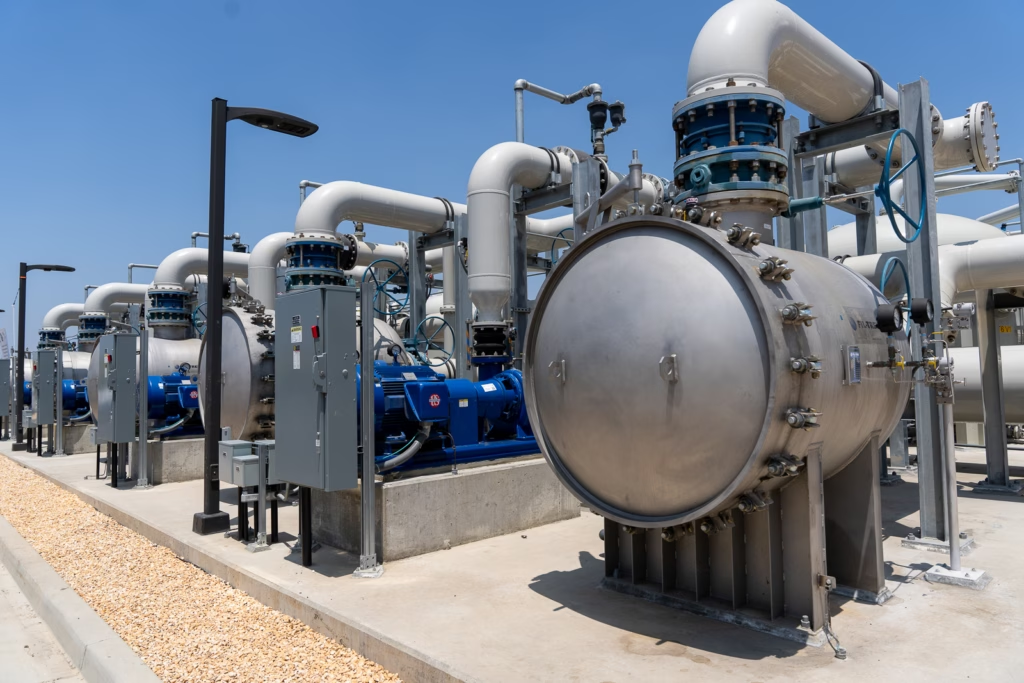Keep Funds Flowing: Federal funding fuels PFAS response in Southern California
October 7, 2025

AWWA Articles
Keep Funds Flowing: Federal funding fuels PFAS response in Southern California
The Orange County Water District in California offers a powerful example of how support from the Drinking Water State Revolving Fund (DWSRF) and other federal programs enables utilities to respond to evolving demands and challenges.
Of the district’s 210 groundwater wells, which supply drinking water to 2.5 million people in north and central Orange County, 102 require treatment for PFAS, or per- and polyfluoroalkyl substances.

The district’s response has unfolded in two waves.
The first began in February 2021 when California set a 10-parts-per-trillion advisory level for PFAS. That shut down 62 wells, which required the water utilities in the district’s service area to import water — an additional cost to the overall project.
The second wave of PFAS treatment work followed in spring 2024 when the U.S. Environmental Protection Agency established a maximum contaminant level of four-parts-per-trillion, affecting another 40 wells. These new treatment facilities are currently in progress.
They secured $78 million from the DWSRF Emerging Contaminant Principal Forgiveness Program, which was “very helpful,” said John Kennedy, general manager for the district. “Getting these grants created a lot of positive momentum in moving these PFAS projects forward.”
In that time, design and construction costs have surged because of inflation and supply chain issues. “It cost approximately $4.5 million to build a PFAS treatment system when we started,” Kennedy said. “Now it’s up to about $7 million per well. The longer you wait, the more expensive these projects become.”
To treat PFAS, the district is predominantly relying on ion exchange technology, which involves resin (small beads) in the bottom of 16-foot vessels that are 12 feet in diameter. As water passes through, the resin removes PFAS.
While the resins are cost-effective, Kennedy said he encourages water utilities to undertake a detailed piloting program before full-scale implementation in order to select the correct resin.
“If you pick the wrong resin, you might have to change your resin every six months,” Kennedy said. “We picked resins that will last the longest… you can go 18 months before you have to change them out.”
The district estimates a total cost of $1.8 billion to comply with state and federal PFAS drinking water regulations, including capital, operations, maintenance, and the cost of imported water. In addition to the state revolving fund, the district received a $94 million low-interest loan under the Water Infrastructure Finance and Innovation Act (WIFIA). Federal funding has played a crucial role in reducing the long-term debt that the utility has taken on, which — in the end — saves ratepayers from incurring additional costs.
The district increased rates 10% annually for three consecutive years to fund the PFAS treatment plants, but Kennedy estimates it would have been much higher without the federal financial support.
“That’s a very difficult thing to have to do,” he said.
Federal programs like the DWSRF Emerging Contaminant Program and WIFIA loans are currently facing cuts in the U.S. Congress. In response, American Water Works Association is elevating stories of infrastructure improvements to underscore the critical nature of these programs.
In Orange County, the PFAS treatment facilities not only ensure clean and safe drinking water, they also provide an exemplar for water leaders across the world who visit to learn more about ways to address PFAS.
“We’re getting federal money, but people across the country are benefiting,” Kennedy said.
This isn’t the first time Orange County has been on the forefront. The district’s Groundwater Replenishment System, the world’s largest water recycling facility, hosts three to five tours per week. The system creates 130 million gallons of purified water from wastewater daily.
That project — which recycles enough water for 1 million people — was also funded through a Clean Water SRF and WIFIA loan.
Has your utility benefited from federal infrastructure funding? If AWWA can feature your project in its advocacy efforts, please fill out this form.
Advertisement